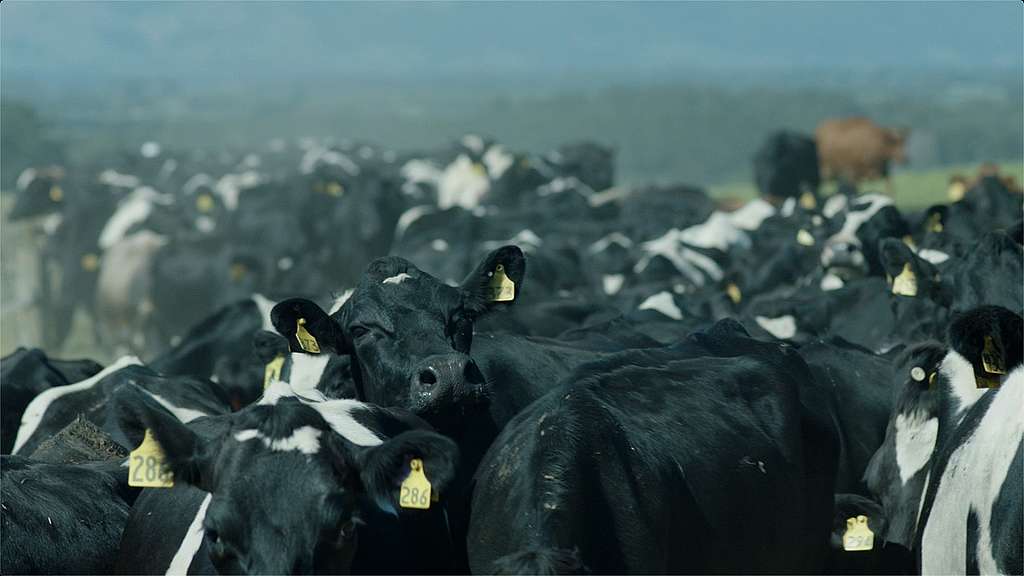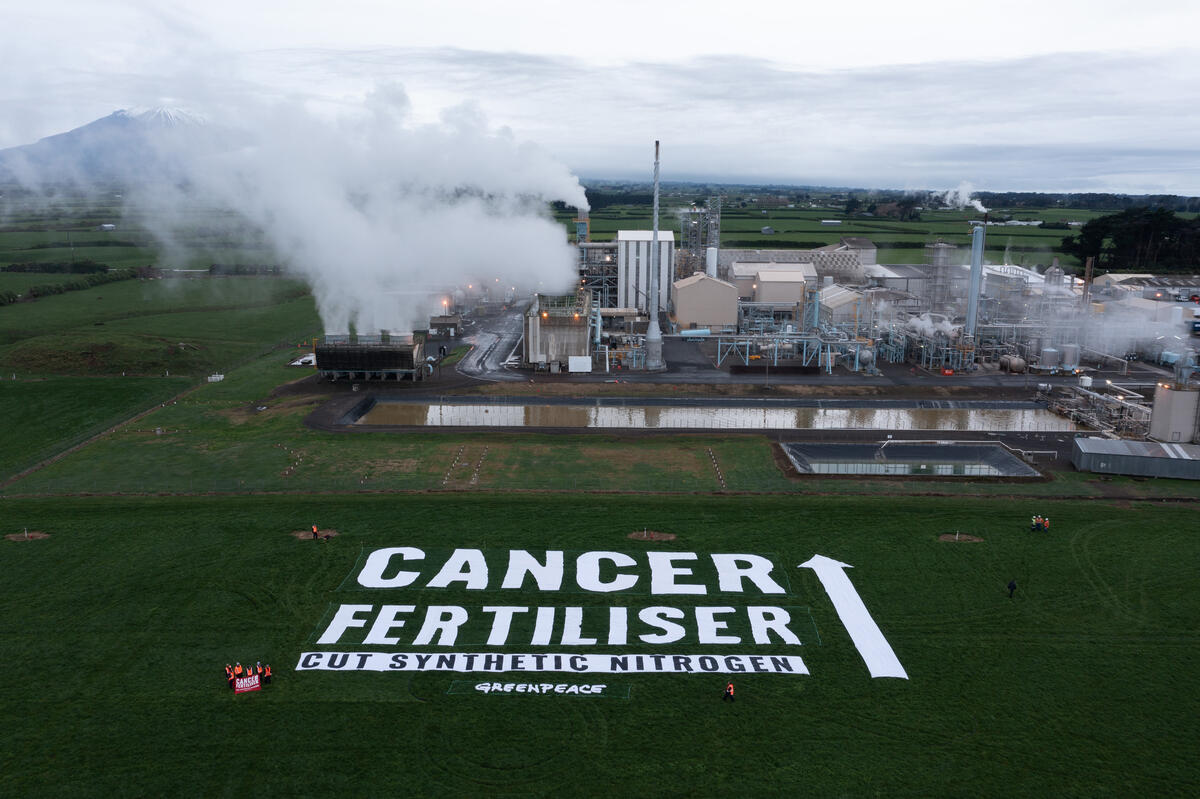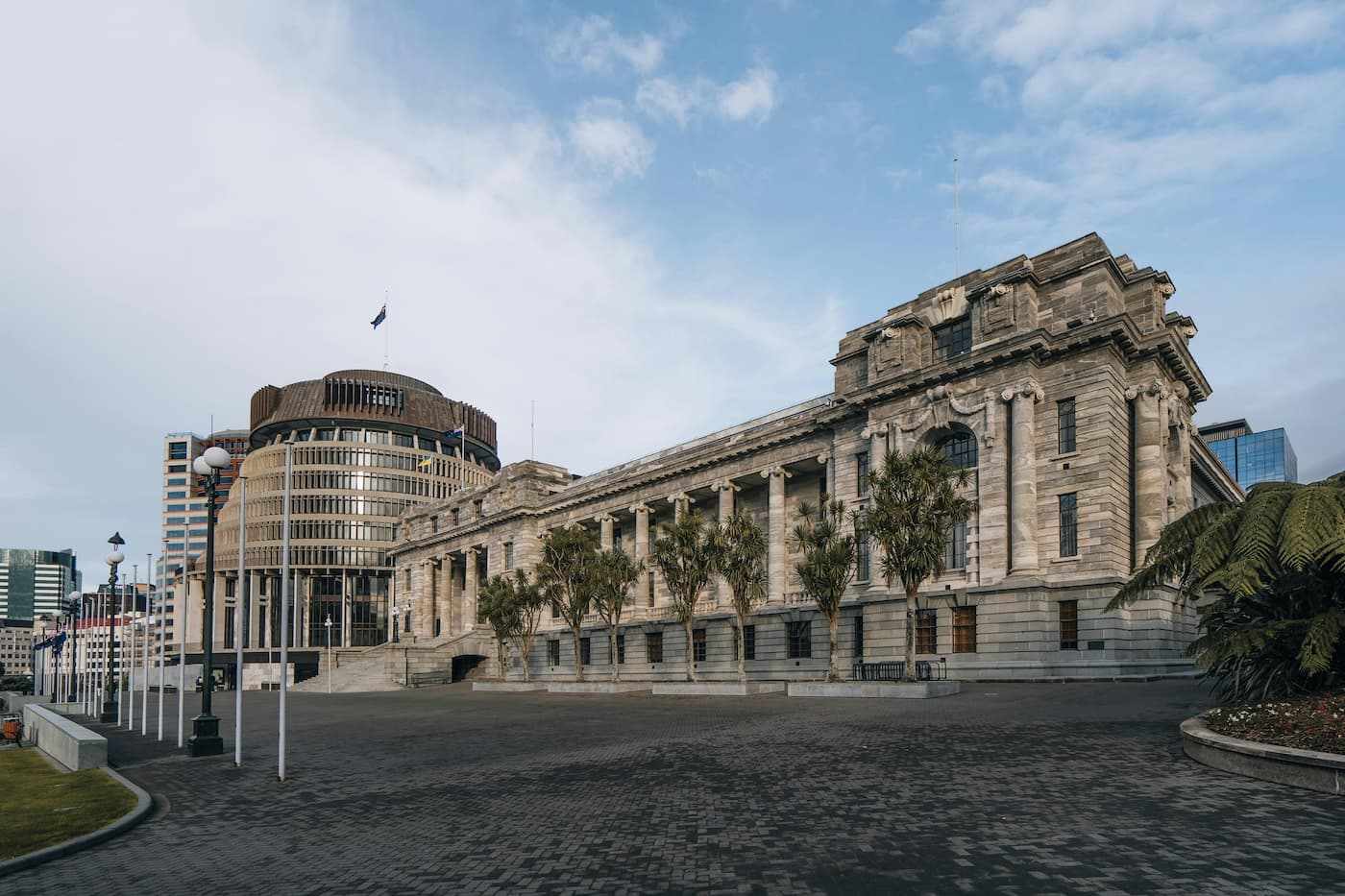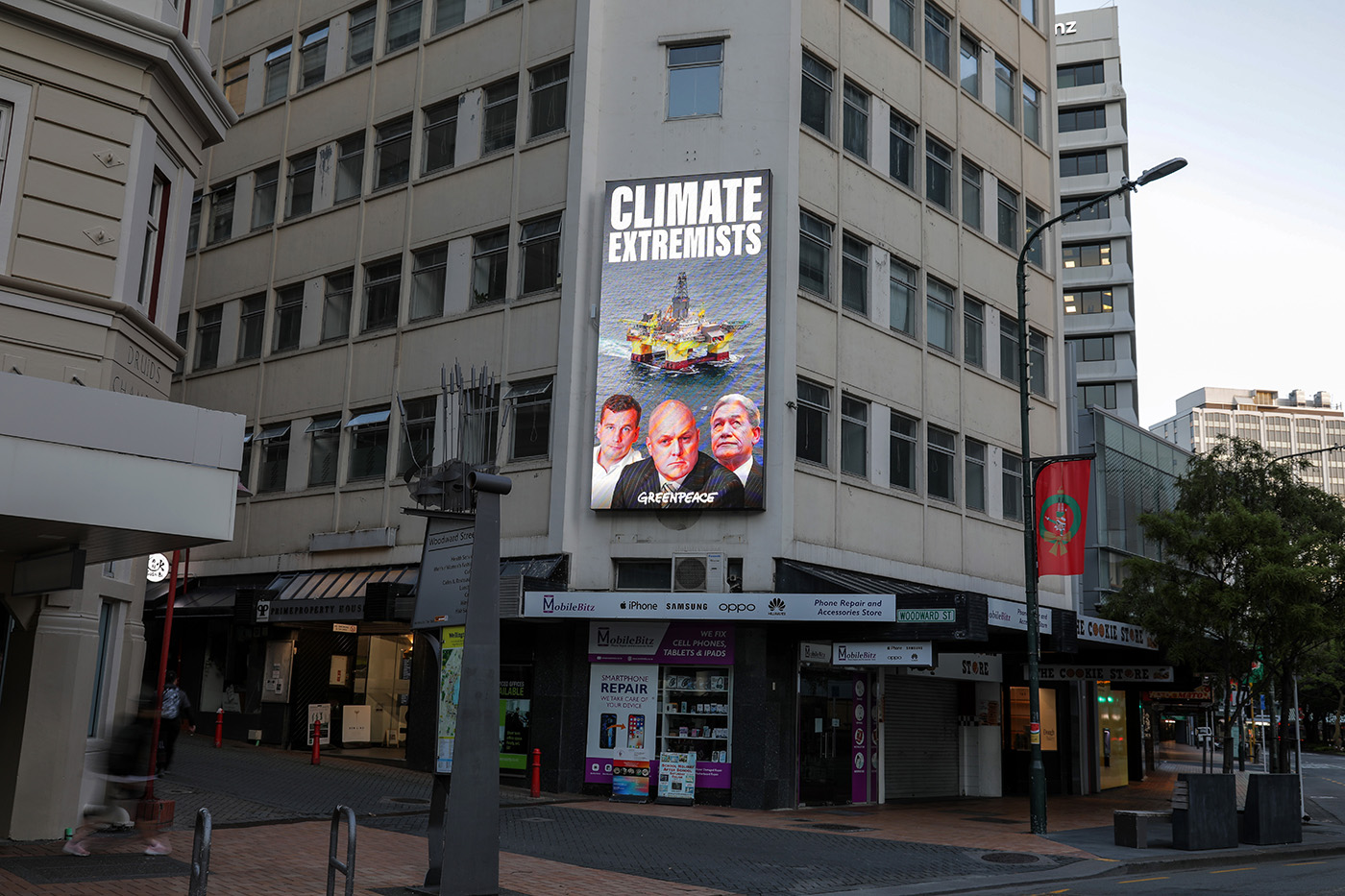With the support of Hapū of Ngāruahine in South Taranaki, Greenpeace Aotearoa is appealing against the High Court’s approval of the proposal to create hydrogen for the manufacture of urea at the Ballance-owned Kapuni fertiliser factory, in Te Korowai o Ngāruahine Trust v Hiringa Energy Ltd.
Greenpeace claims that the High Court erred in failing to find that the Consenting Panel’s decision to place no conditions on whether, when, and how the project transitioned from fertiliser feedstock production to hydrogen fuel production, was a breach of the Covid-19 Recovery Fast-Track Consenting Act.
Senior Campaigner Steve Abel says, “the Consenting Panel rightly identified that transition to 100 per cent fuel use within five years was a critical reason for its decision to grant the consent, yet the conditions of the consent don’t require that transition to ever occur.”
“This effectively allows Hiringa and Ballance to keep using hydrogen for manufacturing polluting synthetic nitrogen fertiliser for decades, and never actually transition to using it for transport fuel.”
Greenpeace submits that the Panel also undermined the statutory requirement in the fast-track legislation that decisions must be made consistently with the principles of Te Tiriti o Waitangi because it left decision-making about the key issue of transition to instead be dealt with by the local council under the weaker provisions of the Resource Management Act, which do not require decisions to be made consistently with Te Tiriti principles.
“One clear intent of the fast-track wording was to give greater weight to Te Tiriti but the Panel effectively bypassed that requirement by kicking transition decisions to the local council,” says Abel.
John Hooker of Ōkahu-Inuawai Me Ētehi Atu, says, “We support Greenpeace appealing the case because we object to the ability to perpetually create urea, where our marae has a deep well poisoned by aquifer nitrates. The laissez faire approach to principles of Te Tiriti o Waitangi is also of concern because our Ngāruahine Treaty Of Waitangi Settlement has occurred only 7 years ago whereby the Crown apologised then for its serious Treaty Breaches, where is the sincerity of that apology? The potential erection of these hideous structures in our backyard creating eye pollution in relation to our spiritual interaction with our tupuna Maunga is horrifying, we are amenable to them being re-sited closer to the coast. They are 4 times higher than the Hawera water tower, I shudder to think of the noise pollution for those residents within 3 kms of these towers, our Waverly families and those out of Palmerston North know well of those issues.”
Karl Adamson from Ngāti Haua Hapū says, “We support Greenpeace appealing the case, Ngāti Haua had expressed several concerns with the project during consultation, in the context of what the hydrogen was being used to produce (fertiliser) in the start up period of the project we considered this to be “dirty energy”, Hiringa Energy gave the undertaking that the total production of hydrogen after five years would transition to supply the heavy transport industry which Ngāti Haua accepted at face value, although this has not been guaranteed through the consenting process so it remains a concern.
“The primary concern to Ngāti Haua was the location of the proposed wind turbines being used to generate power for the project at a PKW farm located on Kokiri Road. Ngāti Haua requested that they be relocated as a mitigation solution which was declined by Hiringa Energy citing financial constraints. The issue that Ngāti Haua has is that a lease agreement between Hiringa Energy & PKW was already in place before wider consultation had started thereby negating any realistic opportunity for Ngāruahine to assess the cultural impact of the wind turbines,” says Adamson.
Allen Web from Kanihi Umutahi me ētehi atu Hapū, also expressed support for the Greenpeace appeal saying, “The continued manufacturing of synthetic nitrogen fertiliser including urea is one of many pollutants currently affecting our rivers, waterways, and potable water. With no real certainty on when the transition into Hydrogen fuel will occur this has only undermined the Panel’s decision in granting the project to proceed and shown disrespect to any Treaty Principles. For decades, our people have fought to exert their kaitiakitanga and tikanga to safeguard our maunga, awa, whenua and moana so that the next generation don’t have to. When does it stop?”
Greenpeace has actively campaigned against the use of synthetic nitrogen fertiliser including urea, which is a major driver of dairy intensity; river pollution; a significant contributor to the climate pollutant nitrous oxide; and is a direct cause of nitrate contamination of drinking water which is linked to cancer and birth defects.
In July this year Greenpeace placed a massive 1500 metre banner alongside the Kapuni Fertiliser factory reading “CANCER FERTILISER – CUT SYNTHETIC NITROGEN.”
Link to Greenpeace Notice of Appeal here

Sign on now to call on the New Zealand Govt to ban chemical nitrogen fertiliser.
Take Action



